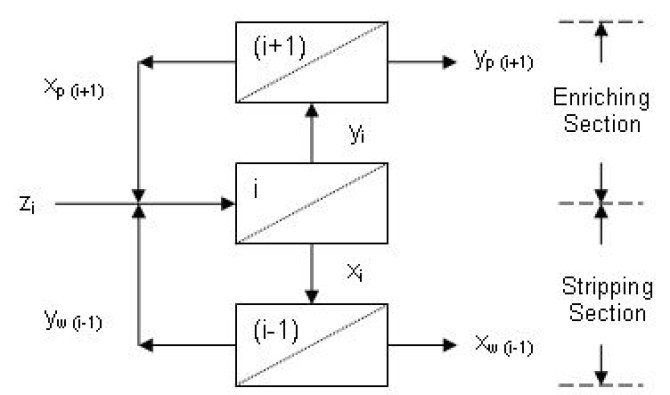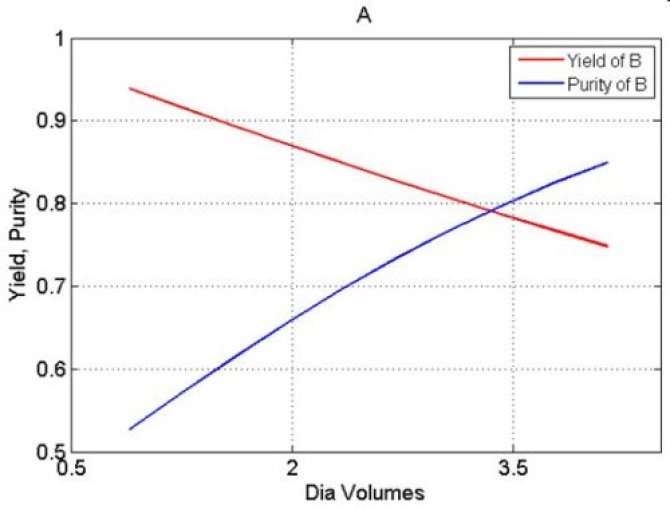
Project
Membrane Cascades
By Nirmal Patil
Introduction
Membrane filtrations are giving growing competition to chromatographic techniques in downstream processing. However, the most efficient membrane filter cannot provide the high separation performance that is common for chromatographic processes. Membrane performance might be improved by using a cascade of membranes (MCT). The ideal membrane cascades is shown in Fig. 1.
Aim
Development of continuous membrane cascades to fractionate small molecules.
Research Approach
1) Predicting cascade performance by using the model based on single stage experimentation.
2) Implementation of model output data for cascade experiments and optimization.

Fig. 1: Membrane cascade scheme
Ideal cascade constraint :yi-1 = xi+1 = zi (i = 2,3,..,n-1)
yi , xi , zi are stream compositions.
Case Study
Purification of molecule A and B with sieving coefficients Sa=0.57 and Sb=0.07 respectively, and a with feed fraction of zf=0.5846. The system is modelled with diafiltration mode.
Results
A Cascade of membranes gives higher yield and purity (Fig. 2) as compared to single stage with varying overall fractional cut, R/F of target molecule in retentate to feed (Table 1).


Fig. 2: Simulation of single stage (A) and cascade system (B)
| Output Paramaters | Single Stage | Three Stage |
| Yield | 84.9% | 95.2% |
| Purity | 69.6% | 96.4% |
| Diavolumes Feed Stage | 2.34 | 2.34 |
| Diavolumes Product Stage | - | 4.93 |
| Diavolumes Waste | - | 3.17 |
Conclusion
- In MCT, yield and purity are increased by 10% and 26% respectively as compared to single stage.
- Single stage purity and yield are inversely proportional. They become directly proportional in the MCT, which does not limit the system with trade of between yield and purity.